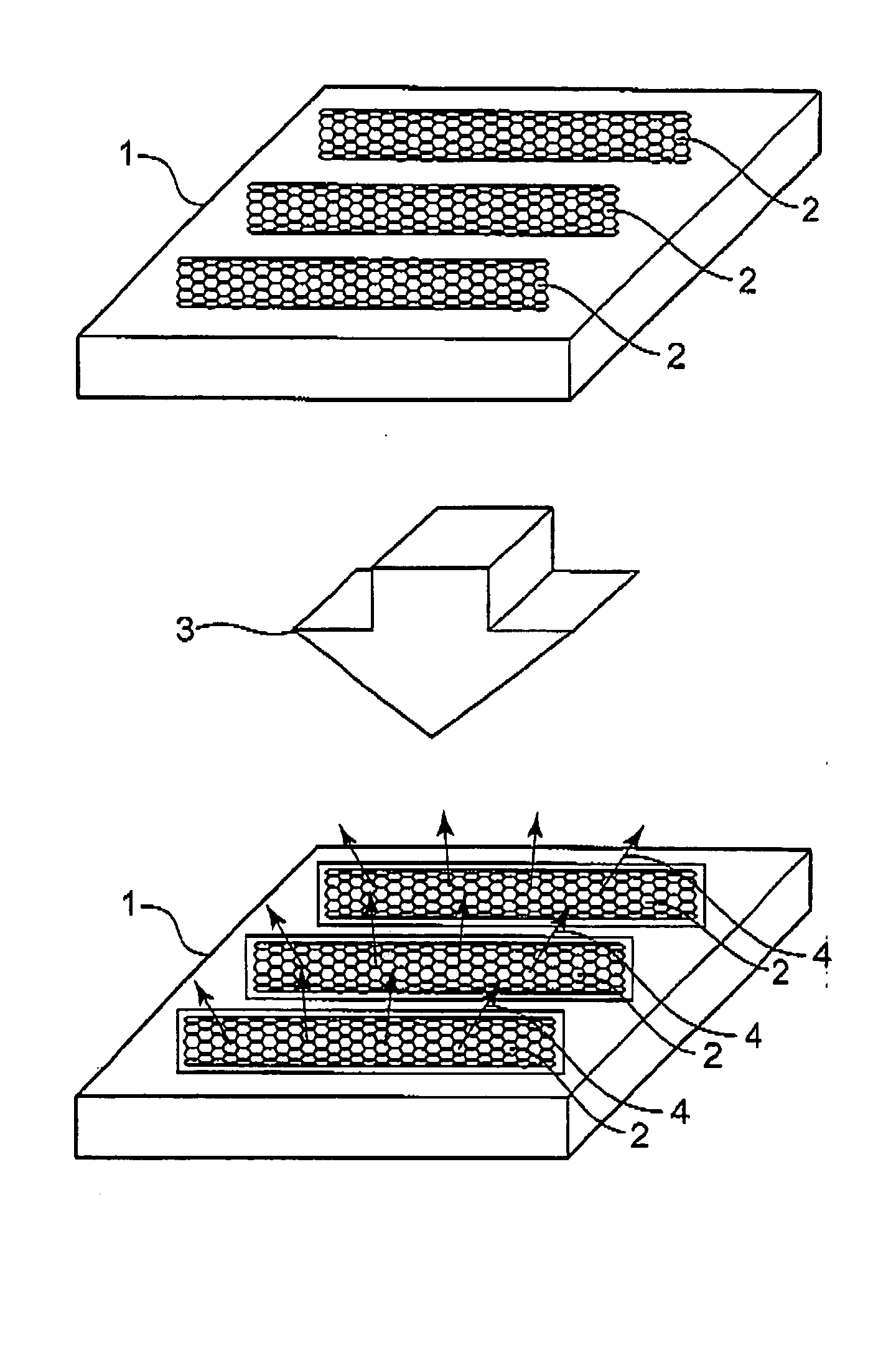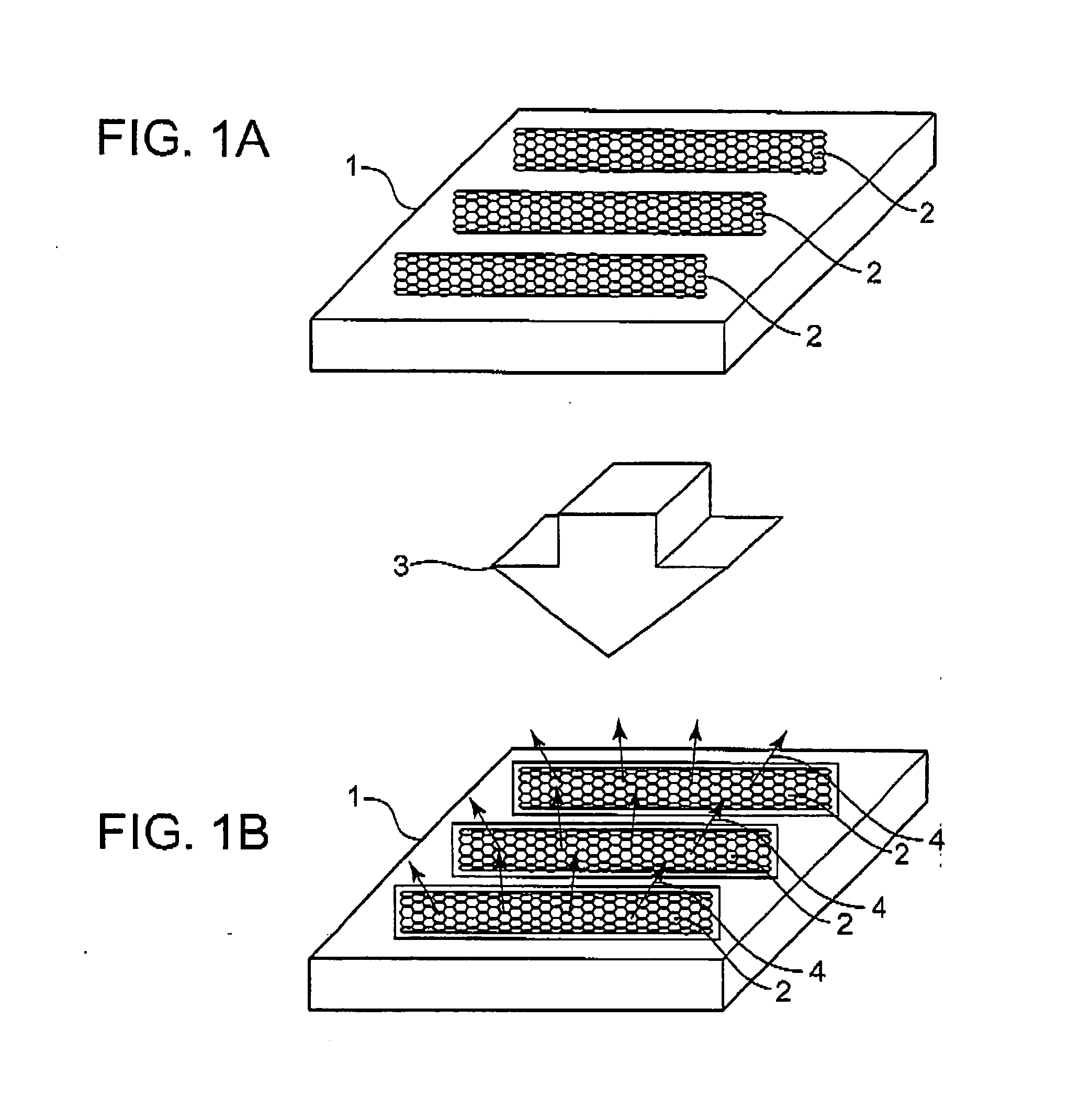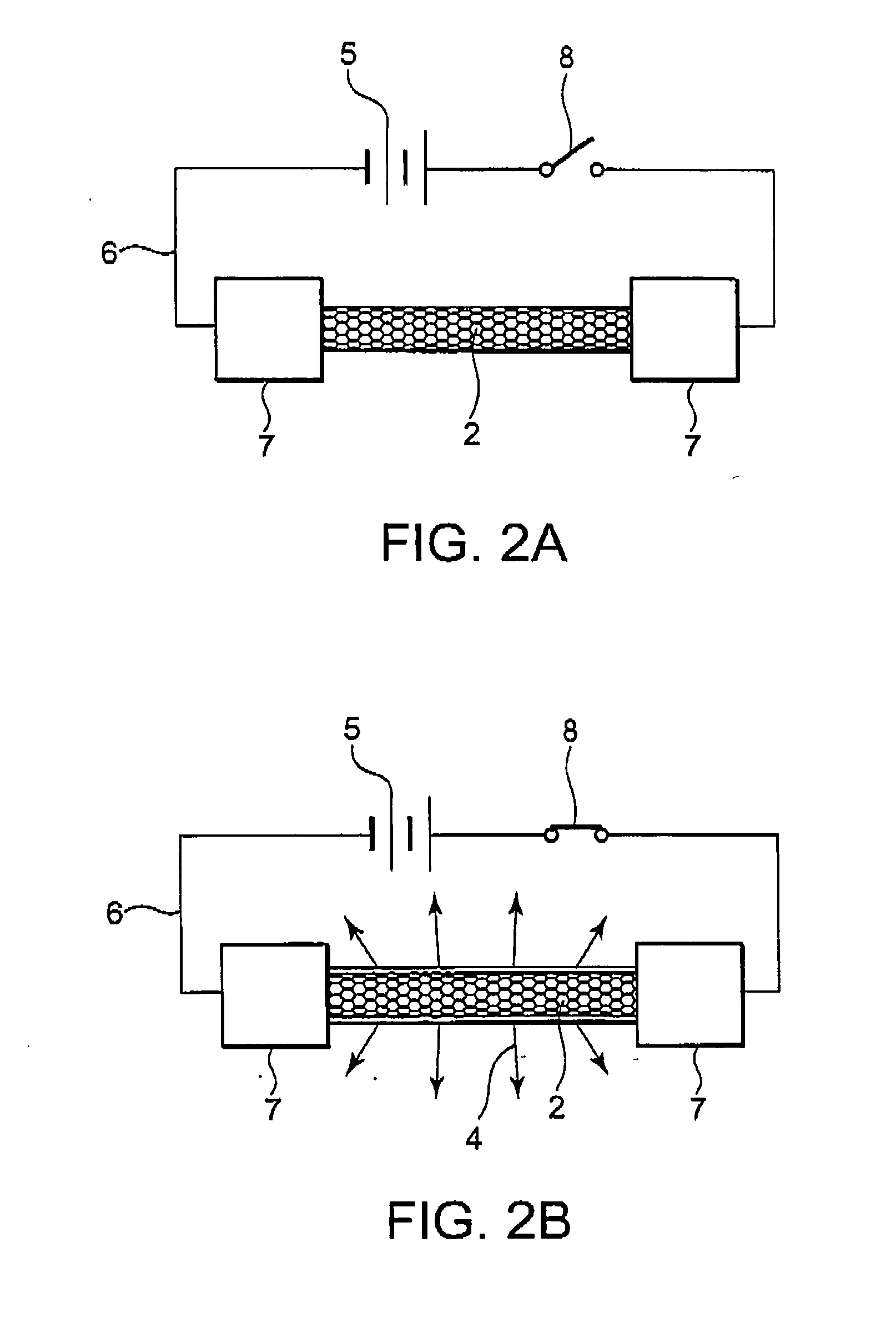Semiconductor device and method of manufacturing the same
a technology of semiconductor devices and semiconductors, applied in the field of semiconductor devices, can solve the problems of low production scale, low throughput, and inability to become commercially practical, and achieve the effect of improving the performance of semiconductor devices
- Summary
- Abstract
- Description
- Claims
- Application Information
AI Technical Summary
Benefits of technology
Problems solved by technology
Method used
Image
Examples
first embodiment
[0062]FIGS. 6A, 6B, 6C, 6D, 6E, and 6F show a method of manufacturing a field-effect transistor according to First Embodiment. These figures also show the resulting field-effect transistor.
[0063] Initially, a single-layer carbon nanotube 50 was placed in a vacuum system. Electric power was supplied to the carbon nanotube 50 from a power supply 5 through an interconnection 6 (FIG. 6A). Consequently, the carbon nanotube 50 was self-heated by the action of Joule heat according to the supplied power. It emitted heat, light, and thermoelectrons to a minute region in the vicinity of the carbon nanotube 50. Next, a raw material 51 including oxygen (O2) and silane (SiH4) was supplied into the vacuum system so as to form a silicon oxide layer 52 as a gate insulating layer. The heat, light, and thermoelectrons formed as a result of self-heating acted as an energy source. They caused the thermal decomposition of the raw material 51. They also caused the solid phase growth of decomposed produc...
second embodiment
[0069]FIGS. 7A, 7B, 7C, and 7D are schematic diagrams showing the procedures of manufacturing a ring oscillation circuit according to Second Embodiment of the present invention. The ring oscillation circuit comprises inverters in combination. Each of the inverters comprises a p-type carbon nanotube field-effect transistor and an n-type carbon nanotube field-effect transistor.
[0070] In this embodiment, the external energy for processing is an electromagnetic wave resonating energy levels of the carbon nanotube. Initially, undoped intrinsic semiconductor carbon nanotubes 50 were prepared, and an electromagnetic wave was applied to regions 55 in FIG. 7A while feeding a raw material of a p-type dopant (FIG. 7A). Consequently, p-type carbon nanotubes 56 were formed (FIG. 7B). Next, an electromagnetic wave was applied to regions 55 in FIG. 7B while feeding a raw material of an n-type dopant. Consequently, n-type carbon nanotubes 57 were formed (FIG. 7C). Finally, a source-electrode leadi...
third embodiment
[0071]FIG. 8 shows the drain current-gate voltage characteristic of a carbon nanotube field-effect transistor. The field-effect transistor shows conduction converted from p-type conduction to ambipolar conduction by the method according to an embodiment of the present invention.
[0072] In this embodiment, electric power was applied as the external energy. The electric properties of the field-effect transistor were determined using the measuring system in FIG. 5. The drain voltage in these measurements was set at 10 mV. The characteristic curve (a) in FIG. 8 shows the drain current-gate voltage characteristic of the field-effect transistor before power supply. The characteristic curves (b), (c), and (d) show the drain current-gate voltage characteristics after electric power of 180 μW, 380 μW, and 920 μW were supplied, respectively. The characteristic curve (a) demonstrates that the carbon nanotube field-effect transistor shows p-type conduction in which the drain current increases a...
PUM
| Property | Measurement | Unit |
|---|---|---|
| diameter | aaaaa | aaaaa |
| temperature | aaaaa | aaaaa |
| ionization potential | aaaaa | aaaaa |
Abstract
Description
Claims
Application Information
 Login to View More
Login to View More - R&D
- Intellectual Property
- Life Sciences
- Materials
- Tech Scout
- Unparalleled Data Quality
- Higher Quality Content
- 60% Fewer Hallucinations
Browse by: Latest US Patents, China's latest patents, Technical Efficacy Thesaurus, Application Domain, Technology Topic, Popular Technical Reports.
© 2025 PatSnap. All rights reserved.Legal|Privacy policy|Modern Slavery Act Transparency Statement|Sitemap|About US| Contact US: help@patsnap.com



